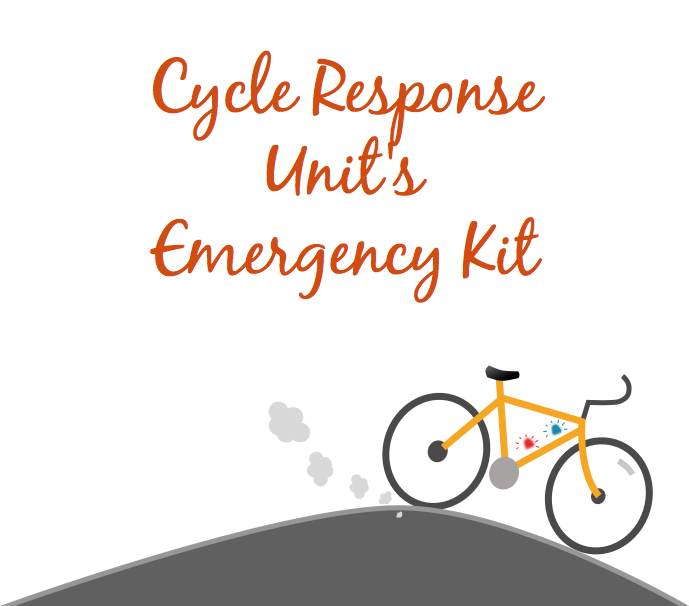Cycle Response Unit’s Emergency Kit

Openhouse explores what equipment the ambulance service’s cycle response unit carries with them.
Since their first trial, 15 years ago, the ambulance service’s cycle response unit has helped save numerous lives, improved the service’s efficiency and brought ambulance teams closer to the community.
Though […]

Openhouse explores what equipment the ambulance service’s cycle response unit carries with them.
Since their first trial, 15 years ago, the ambulance service’s cycle response unit has helped save numerous lives, improved the service’s efficiency and brought ambulance teams closer to the community.
Though still regarded as a novelty by much of the general public, the bikes can make it to the scene of an inner city incident much quicker than an ambulance and they amazingly carry all the essential life saving equipment that you would find in an ambulance or rapid response car.
The equipment is transported inside waterproof panniers, often supplied by Openhouse, with bright yellow and green colours and reflective markings to identify the riders as ambulance personnel, and to make sure they are well seen on the road and in the precinct.
What is inside a cycle pannier?

The life saving machines that provide shock therapy for patients who suffer cardiac arrest are at the ready for CRUs, and with over 60,000 out of hospital cardiac arrests every year they are an essential part of the units equipment.

In the case of an out of hospital emergency, oxygen treatment is necessary therapy for resuscitation, major trauma, anaphylaxis, major haemorrhage, shock, active convulsions and hypothermia. If a patient is suffering from hypoxia and/or hypoxaemia, oxygen will increase the flow of oxygen around the body reducing the chances of brain damage and aiding recovery.
Entonox, or Nitrous oxide and oxygen gas mixture, provides patients with short term pain relief and relaxation during painful procedures.

A full first aid kit containing dressings for wounds and burns, along with anti-bacterial wipes and gels are at hand to help all patients in distress. A standard piece of kit for any member of the emergency services.

These can be used to give drugs and fluids to replace blood loss, or to help patients with low blood pressure.

CRUs also take with them general diagnostic equipment such as a stethoscope, blood pressure cuffs, a thermometer and also a blood sugar testing kit for diabetics.

When the bicycle paramedics are cycling approximately 140 miles a week, it would be unsurprising that at some point they are going to need to fix a puncture. So along with the rest of their medical kit and equipment they carry a puncture repair kit to keep them on the road at all times.
At Openhouse we supply panniers to Cycle Response Units, and medical kits and diagnostic equipment to paramedics and Ambulance services across the UK.


